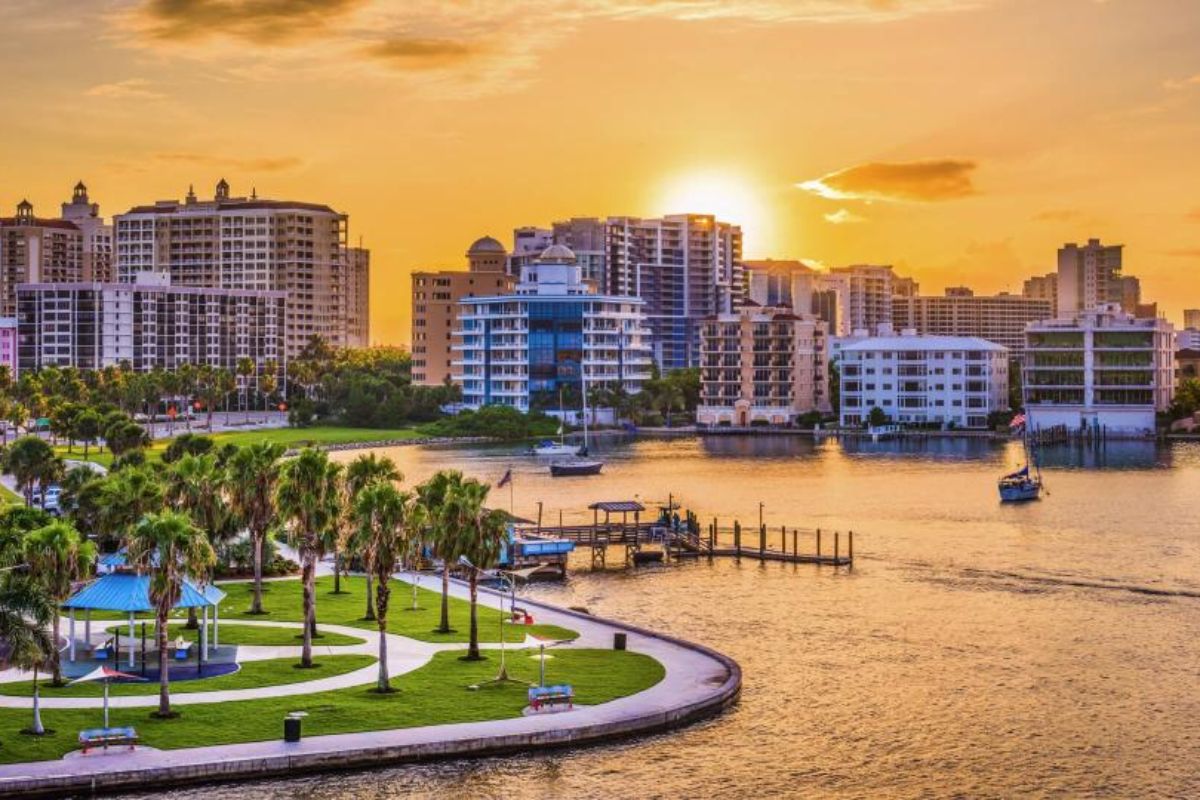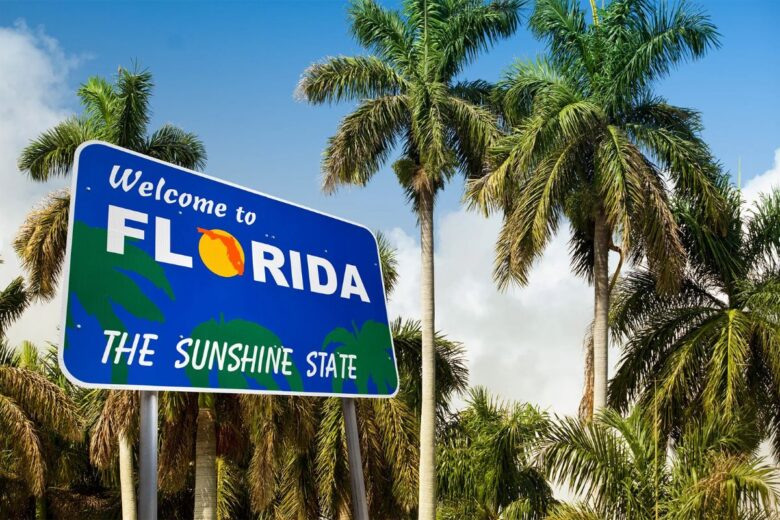Florida is widely recognized as the ideal destination for sunny vacations, stunning beaches, and, of course, trips to Disney World. Known around the world for its tropical climate and endless fun, the state wasn’t always seen in such a positive light. It took a strategic marketing effort to shape its identity into what we know today. Below, we explore how Florida earned the nickname “Sunshine State” and how this identity became an integral part of its legacy.
The Origin of the “Sunshine State” Nickname
The nickname “Sunshine State” has become synonymous with Florida, but its origins are more complex than most realize. While it now evokes images of warm beaches and sunny skies, the term initially carried a negative connotation. In the mid-19th century, Florida was struggling economically, and the nickname was used derisively to highlight its perceived lack of potential. Over time, this would change as the state recognized the opportunity to reinvent its image.
By the late 19th century, Florida’s leaders saw the need to promote its abundant sunshine and natural beauty as unique selling points. Drawing inspiration from other global branding efforts, such as Japan’s “Land of the Rising Sun,” they embarked on a campaign to redefine the state’s identity. Their efforts successfully turned the tide, transforming Florida’s public perception from a struggling state to a promising land of opportunity and leisure.
The new meaning of “Sunshine State” quickly gained traction, thanks to effective marketing strategies and a growing interest in tourism. This nickname became a rallying cry for Florida’s potential as a paradise, with its sunny climate celebrated in advertisements and promotional materials. Over time, the Sunshine State evolved into a global icon, representing more than just weather but an ideal of endless possibilities and relaxation.
The Power of Marketing in Florida’s Transformation

The rebranding of Florida was no accident; it was a deliberate and calculated effort. The state’s transformation into the Sunshine State relied heavily on:
- Strategic advertising campaigns that highlighted Florida’s sunny weather.
- Partnerships between local businesses and tourism boards.
- Adoption of slogans like “The Best Climate in the Universe” to capture attention.
- A focus on drawing investors and visitors to showcase Florida’s potential.
These efforts culminated in a lasting legacy, solidifying Florida’s identity as a top vacation destination. From posters to partnerships, marketing played a pivotal role in shaping how the world sees the Sunshine State today.
The Marketing Campaign That Changed Everything
Florida’s rise as a tourism hotspot didn’t happen by chance. Local business owners created bold advertising campaigns, such as those led by the Florida Tropical Trade and Travel Company, which described the state as a “Paradise of the World.” These campaigns emphasized Florida’s tropical climate and healthy, carefree lifestyle, using slogans like “The Best Climate in the World” and later, “The Best Climate in the Universe.”
These messages appeared on pamphlets, posters, and other marketing materials, drawing attention to the state’s sunny skies and pleasant weather. By the end of the 19th century, the “Sunshine State” nickname was not only a marketing tool but also an enduring symbol of Florida’s identity.
The Impact of the Nickname

The “Sunshine State” nickname has become synonymous with Florida’s appeal as a top vacation destination. Its sunny weather attracts millions of visitors each year to enjoy the beaches, theme parks, and vibrant cities. However, the nickname has also faced criticism due to its association with Florida’s environmental challenges, including rising greenhouse gas emissions and the effects of climate change.
Warmer temperatures and shifting weather patterns have impacted tourism and agriculture in the state, leading to reduced rainfall and drier conditions. Despite these challenges, Florida’s nickname continues to evoke images of paradise for many, solidifying its place as one of the world’s most iconic tourist destinations.
Celebrating the “Sunshine State”
Today, Florida residents and visitors alike embrace the “Sunshine State” identity. The nickname is used proudly, even becoming synonymous with the state itself. Businesses, universities, and organizations often incorporate the term into their branding, further cementing its cultural significance.
Tourist hotspots like Walt Disney World, Universal Studios, and SeaWorld celebrate Florida’s sunny weather, offering experiences that take full advantage of its warm climate. This connection to sunshine and fun continues to attract tourists from all over the globe, ensuring that Florida’s tourism industry remains a cornerstone of its economy.
Conclusion: The Legacy of the “Sunshine State”
The nickname “Sunshine State” is far more than a casual descriptor; it encapsulates Florida’s transformation into a world-renowned destination. From its early struggles to its rise as a tourism and cultural powerhouse, the term has helped shape the state’s identity. The warm climate, vibrant attractions, and stunning landscapes continue to draw millions of visitors annually, ensuring its place as a beacon of relaxation and adventure.
However, the legacy of the Sunshine State is not without challenges. Environmental concerns, such as rising temperatures and shifting weather patterns, pose ongoing issues for the state’s tourism and agriculture industries. Despite these hurdles, the nickname endures as a symbol of Florida’s resilience and allure, inviting people from around the globe to experience its unique charm.
Jade Pinheiro is a proud Florida resident and the founder of Florida Insider. With over a decade of experience living in the state, she has developed a profound understanding and appreciation for Florida’s diverse culture and lifestyle. Through her website, Jade shares her personal insights, highlighting the best spots, experiences, and hidden gems across the state. Her passion for Florida is evident in every article, as she strives to connect with readers and provide them with an authentic, insider’s view of the Sunshine State.



